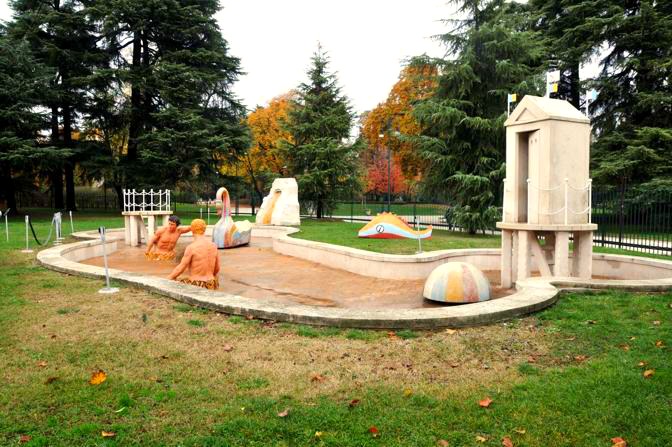Guess the Artwork

The Fountain is the largest sculptural work ever executed by the artist. Jole de Sanna defined it as “painting in landscape” for the impact of its bright colours, framed within the greenery of the surrounding park. The piece is testimony to the extraordinary inventiveness of de Chirico, who, 85 years old at the time, created a work in tune with the then contemporary Pop Art movement. Within its historical context, the work also represents a prototype of “public art”.
The work comprises of eight sculptural elements set in a sinuously shaped basin: two bathers, a swan, a fish, a ball, a changing cabin with diving platform and a fountainhead. A zigzag motif similar to parquet is painted on the bottom of the large basin, simulating the movement of waves, and goes around the two swimmers' waste. This zigzaged “water-parquet” is a repeting motif in De Chirico's Mysterious Baths theme, which originated in 1934 when he created ten lithographs for Jean Cocteau’s Mythologie and is a theme the artist went on to develop extensively in painting as well.
De Chirico commented on the work for Parco Sempione on occasion of the Triennale in 1973: “The idea for the Mysterious Baths came to me once when I happened to be in a house where the floor had been polished with wax. I watched a gentleman walking in front of me, whose legs reflected in the floor. I had the impression that he could sink into that floor, like in a swimming pool and that he could move and even swim in it. Then I imagined strange swimming pools with men immersed in a kind of water-parquet, who stood still and moved, and at times stopped moving to converse with other men who stood outside of the pavement-swimming pool.”



